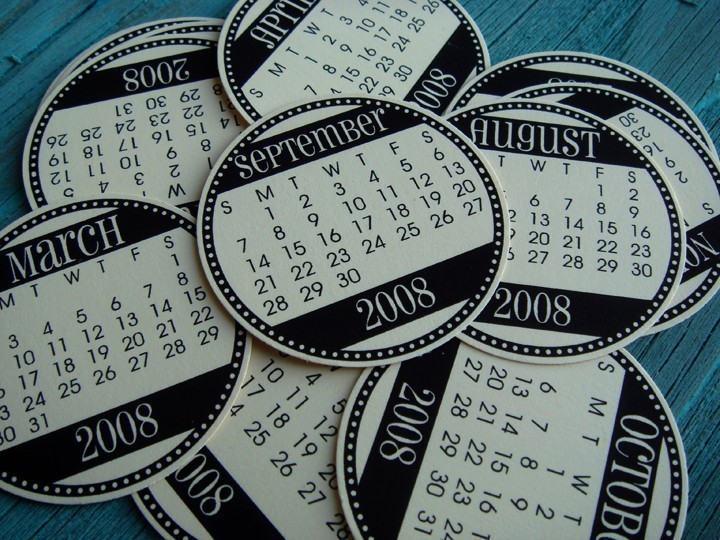
In lieu of a "Best of" we've decided to pull together projects, events and developments within the field of art and technology that we felt were noteworthy. Like all year-end reviews, it would be impossible for this list to be entirely exhaustive, however we do hope that it is, at the very least, indicative of some of the most compelling directions and ideas in circulation over the past 12 months. Rhizome staff John Michael Boling and Ceci Moss assembled this list, with input from Caitlin Jones.
I (Ceci) viewed this screening at Deitch, but the same program was also organized at the Mattress Factory as part of the exhibition PREDRIVE: After Technology. While curated by Murata independently of the PREDRIVE show, the program serendipitously hits on some of the same themes. It featured new work by Yoshi Sodeoka, Ben Jones, Devin Flynn, Eric Wareheim and Tim Heidecker, Eric Fensler, Ara Peterson and Dave Fischer, Melissa Brown and Siebren Versteeg, Billy Grant and Takeshi Murata. The videos were followed by live performances by Nate Boyce and Robert Beatty. Murata also screened a number of films on 16mm by experimental animator Adam Beckett, whose work has had little public exposure.
See "From Bell Labs to Best Buy: Takeshi Murata and Jacob Ciocci in Conversation with PREDRIVE: After Technology Curator Melissa Ragona" on Rhizome
Morales brings together a diverse selection of bootleg art videos, vintage commercials, and other video oddities all culled from his extensive VHS and Laserdisc collection. After watching his uploaded videos, be sure to check out his YouTube favorites on each account.
In a recent essay for e-flux's Journal, Boris Groys describes the changing landscape for installation art, and how this space may reveal a sovereign order at play. In this discussion, he emphasizes the emergence of contemporary art as another widespread exhibition practice --alongside architecture, design, fashion, etc. -- in mass culture. Installation art -- by declaring itself a whole entity and demanding that it be received as such -- invites a sense of collectivity amongst visitors, one that can bring about a self awareness of the transient communities which come together in response to mass culture. He states, "...what the installation offers to the fluid, circulating multitudes is an aura of the here and now. The installation is, above all, a mass-cultural version of individual flanerie, as described by Benjamin, and therefore a place for the emergence of the aura, for 'profane illumination'. " He goes on to consider the circulation of copies in our culture, which also operate as a "flaneur," in that copies eternally yield their own aura in relation to new contexts. "In the framework of contemporary culture, an image is permanently circulating from one medium to another medium, and from one closed context to another closed context.... copies of copies becomes an everyday cultural convention, as was previously the case with the status of the original." Thus, both the installation space itself and the constant recycling and recontextualizing of images can be revelatory, independently or in tandem.
Groys' essay may seem like a funny way to introduce three web-based curatorial entities -- Club Internet, Netmares/Netdreams, and Why + Wherefore -- that popped up this year. (All organized by a young generation of artists/curators, which is important to note.) However, it makes sense if you think of these venues as a form of installation art, produced by a collective of artists, responsive to exhibition practices materializing out of contemporary art as well as the internet. When you weigh in Groys's application of Benjamin to the function of installation art and the contemporary circulation of copies, it all comes together.
See "Interview with Harm van den Dorpel on Club Internet's Free Fall" on Rhizome
See "Online Curation: A Discussion Between Nicholas Weist and Lumi Tan" on Rhizome
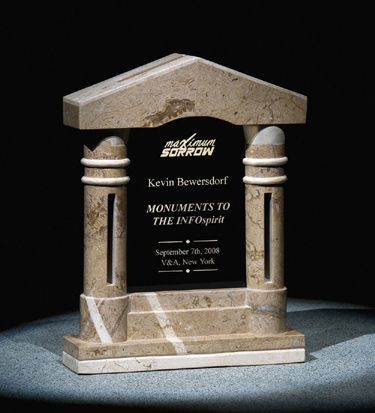
In an interview with Rhizome, conducted by Gene McHugh, Bewersdorf explains the underlining spiritual tendencies within his own work, one that echoes the transcendent and almost sacred experience of surfing the web. In this exhibition, Bewersdorf displayed various monuments to what he describes as the INFOspirit.
See "Interview with Kevin Bewersdorf" by Gene McHugh on Rhizome
Drawing on themes similar to the Bewersdorf show, two exhibitions dealing with religion and media art opened around the same time this year, "Medium Religion" and "For God's Sake." The curatorial statement for "Medium Religion" discusses reading as a ritualistic, repetitive act within multiple religious traditions, and how this effectively distributes ideas and text. The show's main premise -- that religion is a medium as much as media is a religion -- rests on the observation that ritualistic reading practices are central in the circulation of belief. But they also circulate something else -- perhaps an intangible or experiential quality -- which Bewersdorf is attempting to articulate.
See "Dear God, It's Me, Tivo" by Marisa Olson on Rhizome
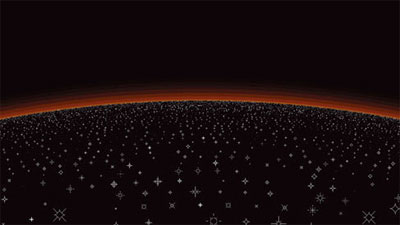
In an interview for Rhizome, Bell-Smith explains, "With the work in this show, I wasn't interested in complete pictures as much as the elements we use to construct them. The lack of figures is my way of focusing on the backgrounds, making it more about these pieces and how we use them, than about full compositions. There's an aspect of the larger scale of the works- as far as physical size is concerned- which is simply about putting the works on an experiential par with paintings and other large scale pictures. I didn't want the digital-ness of the pieces so tied to the experience of a personal computer, because ultimately the ways in which technology affects the way we view and process images- my main interest- extend way beyond the computer screen."
See "Interview with Michael Bell-Smith" by Ceci Moss on Rhizome
The interface and design of YouTube became the focus for a series of projects by a handful of artists this year. The running thread through all of these works seems to be YouTube's unique representation of time -- or frustration, depending on your interpretation.
Constant Dullaart - YouTube as Subject 1/2
Pash* - Moonwalk
Ben Coonley - Seven Video Responses to Constant Dullaart's YouTube As Subject
INFOsembler's first post on spiritsurfers.net
See "A Series of 'Tubes" by Ed Halter on Rhizome
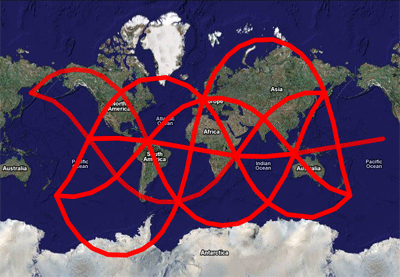
I think everyone can agree, MapQuest never generated as much excitement as Google Maps. We don't need to mull over why either, Google Maps ramped up its features from the get go, developing with interactivity in mind, thus going far beyond the 2D universe of its precursor. It also carries with it substantial weight in terms of surveillance capacity, something a number of these artists have picked up on.
JODI - GLOBALMOVE.US
Pascual Sisto - Last Breath in Alaska (Found Object)
Joe McKay - Google Street view van
Robin Hewlett and Ben Kinsley - Street With A View
Les Liens Invisibles - Google is Not the Map
See "World of Goo" by Ed Halter on Rhizome
See "Another Fine Mess" by Ed Halter on Rhizome
See "Worlds of Wonder" by Ed Halter on Rhizome
See "Fruit Bruit" by Ed Halter on Rhizome
See "The Shape of Things to Come" by Ed Halter on Rhizome
In this brilliant prank, a group of artists secretly staged, over a number of months, the printing and distribution of thousands of faux New York Times newspapers to multiple American cities. Coming mere days after the election of Barack Obama, the newspapers outlined major demands from the left, notably an end to the Iraq War and universal health care.
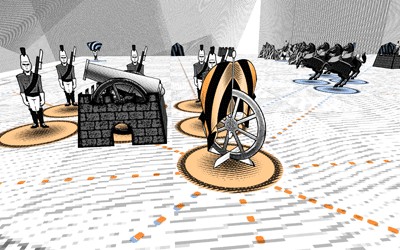
Covered by Caitlin Jones for Rhizome, Radical Software Group's multi-player online game Kriegspiel, which is a rendition of Guy Debord's original Game of War, made headlines when Debord's estate sent a cease and desist letter to its creators. For any reader of Debord, this move was immediately paradoxical, and as Jones explains, potentially indicative of a generational divide in a position toward copyright.
See "Game(s) of War" by Caitlin Jones on Rhizome
Lialina and Espenschied revisited their ongoing Online Newspapers in this installation for the Madison Square Park Conservatory. The series disrupts the serious and utilitarian layout and design of newspapers by overlaying them with popular animated gifs and motifs.
See "In Print" by Dennis Knopf on Rhizome.
When you go surfclubbin', don't forget your hat.
Although the thread began with an almost painfully ridiculous observation ("hipsters != artists"), the conversation eventually emerged into a rather interesting (and heated) debate about surf clubs and what they do (or don't) offer up in terms of criticality.
The Rematerialization of Art
Initiated by an article by Ed Halter on the Holy Fire exhibition which brought together salable art produced by media artists, the discussion soon turned to the commercialization of new media art and its place within the art market.
A culmination of Creative Time's yearlong series Democracy in America, this enormous exhibition at the Park Avenue Armory, indeed a standout, involved over 40 artists and numerous projects. Trevor Paglen's patch collection "Symbology" in an antiquated military general's room and Sharon Haye's Revolutionary Love I and Revolutionary Love 2on the top floor were particularly memorable.
See "Democracy Now" by Marisa Olson on Rhizome
The curators of Arctic Hysteria dedicated an entire half of one room to media artist Kurenniemi's work, which included a screening of the documentary The Future Is Not What It Used To Be. The film spotlights Kurenniemi's obsessive habit of documentation and his exhaustive personal archive, materials which he had hoped would be used by a computer in the far distant future to reconstruct his life. The exhibition also displayed his video art, one of his robots Master Chaynjis, and his homemade instrument the DIMI-S which visitors could activate by touching metal doorknobs connected to a panel.
See "Snow Wave" by Ed Halter on Rhizome.
For this work, Laric edited out all the visual information from Mariah Carey's video Touch My Body (Green Screen Version) except the singer's image, and added in a green screen background, allowing anyone to manipulate the video as they wish. This has produced some interesting results on YouTube, some of which have been taken down due to copyright violation.
See "Go Ahead, Touch Her" by Marisa Olson on Rhizome.
This show, which encompasses everything from early performances by Marina Abravomic to a sculpture by Rafael Lozano-Hemmer to MTAA's Automatic for the People: ( ) to Ant Farm's media van, is a survey of works, from 1950 onward, which necessitate the public's involvement. It was amazing, for me (Ceci), to see the public interact with these works, and it was evident that many of the pieces clicked with museumgoers. There was a recognizable immediacy there, which was exciting to witness.
The term, derived from an interview with Guthrie Lonergan for Rhizome conducted by Thomas Beard, is an attempt to describe the tendency for artists to translate behavioral or situational tendencies occurring online to other contexts, particularly offline. While Lonergan used the expression to explain a trajectory within his work, and not of others, it has certainly resonated and has gained some significance in describing the approach of other artists. See "Interview with Guthrie Lonergan" by Thomas Beard on Rhizome